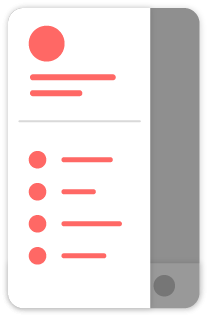How many times have you been told that a Product Designer has to be the voice of the user? If so, you've been told half the story...
Leer másA quick example.
Let's take a Hamburger menu as an example. As a user, what do you expect to happen when you click on it? There you go! It's that belief prior to your action, that thing we believe should happen right after we interact with the application. That defines our mental model.
In this case, we can be sure that most users expect a side menu to be displayed, but.... Why? Well, it has a lot to do with how our brain works and past experiences.


